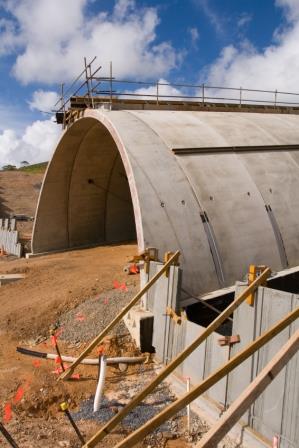How do advisers get exposure to potentially profitable infrastructure projects?
David Prosser looks at the benefits of infrastructure investment companies.
 Where there’s muck, there’s brass. Just ask the construction companies which this week secured close to £2bn worth of contracts to build London’s “super sewer”, a 25km tunnel that is designed to modernise the capital’s Victorian sewerage network.
Where there’s muck, there’s brass. Just ask the construction companies which this week secured close to £2bn worth of contracts to build London’s “super sewer”, a 25km tunnel that is designed to modernise the capital’s Victorian sewerage network.
But how do investors and their financial advisers get exposure to potentially profitable infrastructure projects like this? One option is to buy the stock of the engineers and builders who win these contracts, but for a more direct exposure you need an investment in the projects themselves. That means putting money into the institutions that are funding infrastructure investment.
That isn’t necessarily straightforward. Large scale infrastructure projects are often the preserve of sovereign wealth funds, pension funds and specialist private equity firms that are inaccessible to the majority of investors. But the investment company sector provides a potential solution: according to analysis from Winterflood Securities, there are now 13 closed-ended funds worth £9bn offering exposure to infrastructure investment (including specialists in the renewables sector).
One of those funds is International Public Partnerships, which has a 16 per cent stake in the super sewer project, but there are plenty of other options, including several very large funds. Both HICL Infrastructure and 3i Infrastructure, for example, have market capitalisations well in excess of £1bn.
In an article published this week in Professional Pensions magazine, Helen Oxley, head of business development at Winterflood, points to one reason why investment companies are an attractive proposition for those looking for infrastructure exposure. “These funds offer investors good liquidity in the secondary market,” she points out.
This is important. Even if investors had access to direct infrastructure investment, many would be deterred by the fact that projects typically require investors to tie up their money for the long term. By contrast, a closed-end fund usually has no such restrictions.
As for the investment case, Oxley says this will be compelling for many. “These funds could provide a source of uncorrelated income and their dividend yields of between 4.2 per cent and 6.5 per cent remain attractive in the current low interest rate environment,” she points out.
The good news, moreover, is that this income is often backed by government guarantees. Public sector infrastructure projects are typically underwritten by the government with contracts that promise a pre-agreed income stream to investors.
Given these attractions, you might expect to have seen fund managers put more effort into making infrastructure available to a retail investment audience. However, it would be difficult for an open-ended fund to offer the sort of exposure available from investment companies. The commitment investors must make would not suit an open-ended fund struggling with ebbs and flows in demand from unit-holders – in many circumstances, the investment would be unmanageable.
Closed-end funds are therefore the only game in town for many investors. And funds offering infrastructure exposure are increasingly popular. Several funds have raised new investment over the past year or so, and shares in the majority of these investment companies trade at a premium to the value of the underlying assets.

